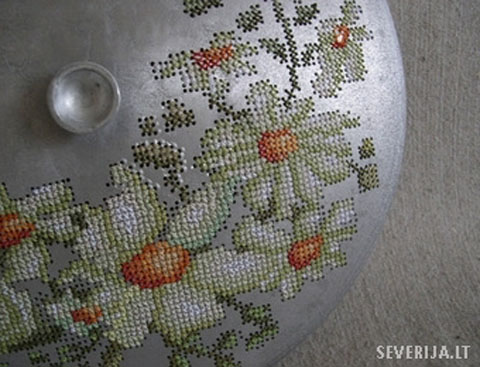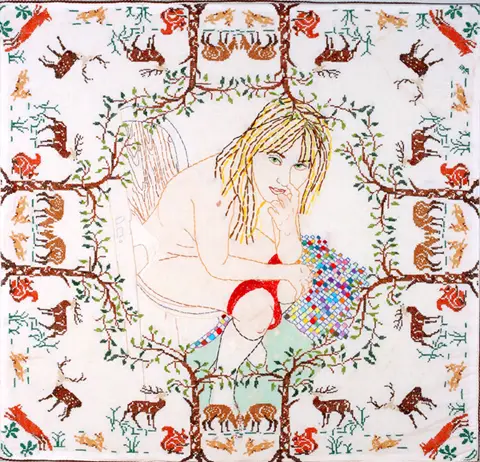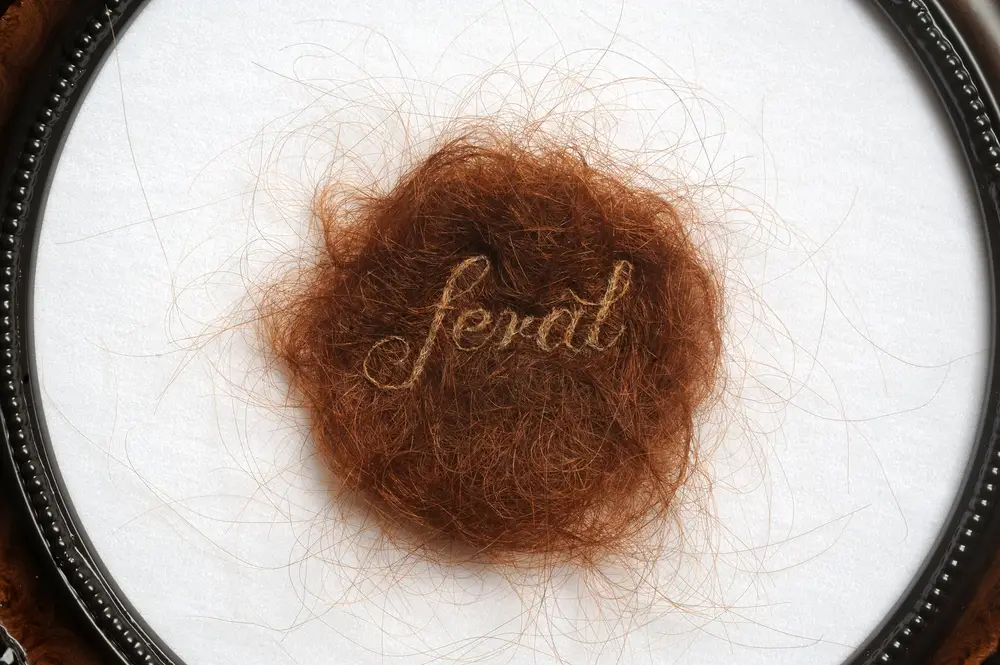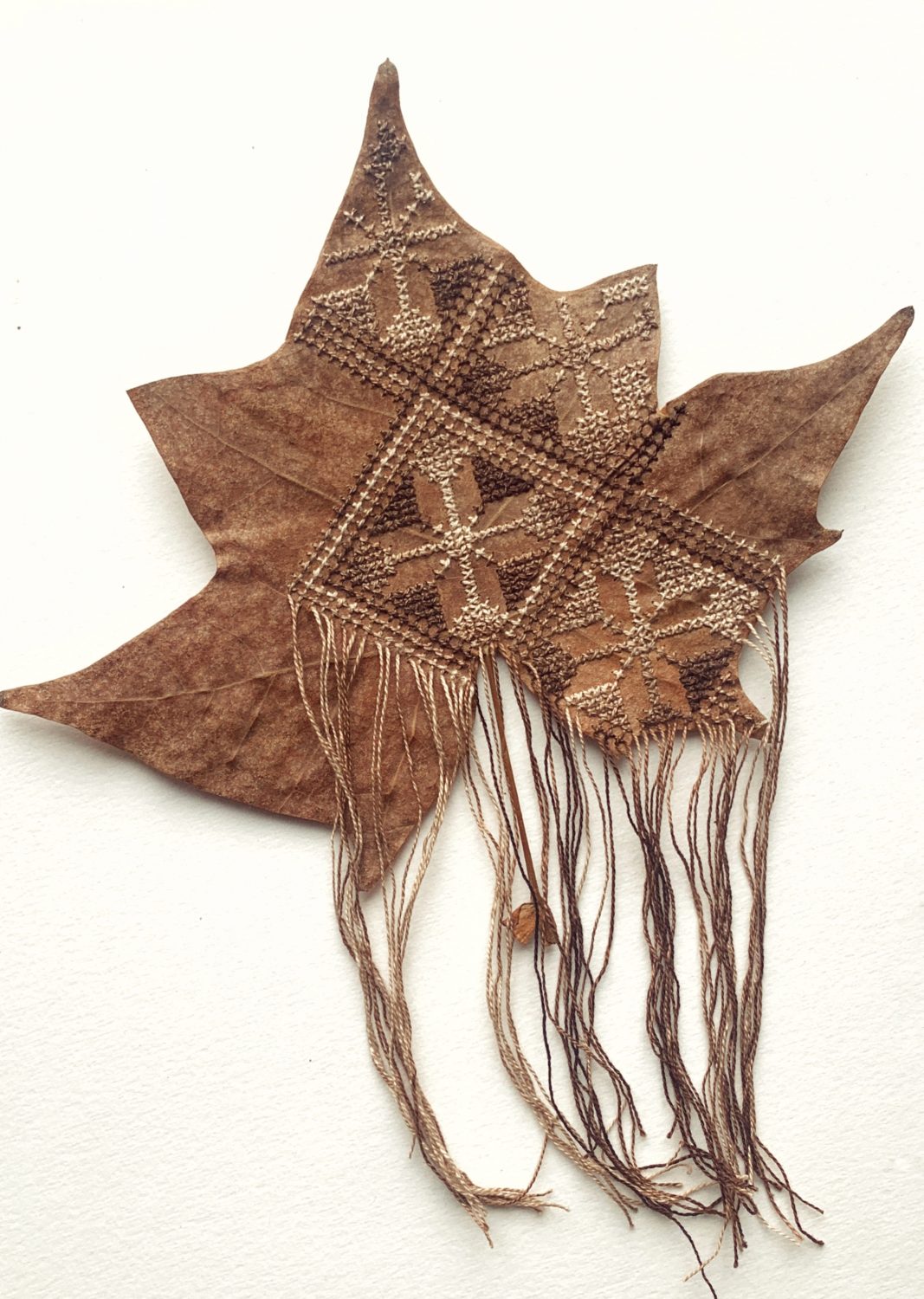It’s another one of those “blow you away” moments here on the Cutting (& Stitching) Edge as I introduce you to the phenomenal work of Severija Inčirauskaitė-Kriaunevičienė.

Severija is a Lithuanian artist whose works involve embroidery on metal. This is what she has to say about her work:
“In my work, I take pleasure in things that are only insignificant details to most people. An ordinary human being and mundane fragments of his or her life acquire an exceptionally important meaning in my works; meanwhile, recognised icons of beauty are less important to me. A banal understanding of beauty and utilitarian things: these are the objects that interest me and inspire creation. Therefore, I use fragments of popular culture, the so-called kitsch, in my art. When they appear in a new context, like some kind of ‘quotations,’ they help to create works that reveal my personal experience and point of view.
“I often use quite a simple and generally understandable language of symbols: flowers, of course, stand for beauty, and lids, buckets, watering cans and shredders refer to the domestic, material side of life. Banal and simple. Like cross-stitched roses, peonies, violas and marguerites are flowers from a Lithuanian girl’s garden. Today the archaic cross-stitching technique reminds of not very tasteful, stereotype, ‘philistine’ embroideries.
“By choosing it and quite ‘syrupy’ kitsch fragments of popular culture and transforming them into aesthetic objects of textile I raise doubt in the traditional hierarchy of art, between what is usually called ‘high art’ and less valuable art. In my works, the kitsch details of popular culture lose their clearly negative contents. A simple understanding of beauty characteristic to ordinary people can also be valuable at least because it is part of life and sincere.“

Her latest series of works are called “Way of Roses”.

She says:
“Way of roses is an expression about successful life. However I read it literally, eliminating figurative positive meaning from this phrase. Embroidered cars rather tell us about dangers facing on the road which are reminded to us by silent flower wreaths often standing by the roadside. The problem is still very hot; tv and newspapers are full of “war on the road” topics everyday. Furthermore this work is a textile version ofpeculiar “tuning” as functional design. That is the way I understand means by which a woman can decorate her car. It differs from widespread, commonly projecting an aggressive image autotuning of men.”

This works blows my mind. From a technical perspective, the planning and effort that must have gone into stitching these works on car parts is amazing. It makes me want to get my drill and tinker with some metal of my own.

I love the way Severija plays the hard masculinity of the car parts off against the feminity of the embroidered flowers. The concept that this might be the way women could “pimp” their rides is both humorous and thought provoking. Her decision to elevate the status of mundane objects through embroidered embellishment is bold, and is a complete success.

You can see more of Severija’s amazing work at her website, and if you live near Berlin, you can see them in the flesh (so to speak) at the terrific Strich und Faden exhibition at the Kunstraum Richard Sorge gallery.
Here at Mr X Stitch, we pride ourselves on being able to bring you the newest talent in the stitching world. If you know of any Cutting (& Stitching) Edge artists, don’t hesitate to email me and tell me.
Now go and tell everyone about Severija Incirauskaite-Kriauneviciene!
What do you think?






